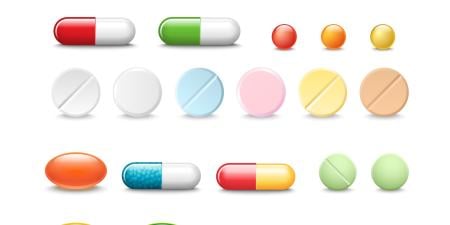The era of consumerism in health care has arrived. Direct-to-consumer advertising of pharmaceuticals, health newsletters from leading hospitals and medical schools, and, most importantly, the near-ubiquity of the Internet have made it easy for consumers to obtain information about their medical conditions and possible treatments. This presents health care providers and patients with both challenges and opportunities.
Challenges of Consumerism in Patient Care
Some studies suggest that patients’ consumerism can negatively affect the quality of patient-doctor communications [1, 2]. Physicians are constrained by schedules that limit the typical office visit to 17 minutes [3]. In this context, spending a considerable portion of appointment time trying to correct misperceptions held by consumerist patients who may hold strong opinions with little medical or scientific background is inefficient and impractical. In addition, consumerism among patients may engender negative feelings among doctors. Physicians may feel that consumerism erodes the respect accorded to their profession [4], and many physicians have mixed feelings about discussing web-based medical information during the clinical encounter [5].
Difficulties can arise when the patient’s preconceptions clash with the doctor’s assessment. Perhaps less information gets effectively exchanged. Even when more information is in fact exchanged, the patient may discount what he or she hears from the doctor. Consider a patient who arrives at the doctor’s office, having already settled in his or her own mind on a diagnosis and preferred treatment. To simplify the problem, assume the patient and doctor agree on the diagnosis. However, the doctor differs strongly as to the treatment, perhaps telling the patient to keep off an injured leg rather than strengthen it by exercise, the patient’s selected therapy. The field of behavioral psychology tells us that people often anchor on the first guess, opinion, or option presented to them [6]. The patient, having anchored on therapeutic exercise, is now told that rest is required. The conflicting beliefs are likely to lead to poor adherence. This is a relatively trivial example. Far more consequential examples arise when patients forgo well-established treatments, say, for cancer, for what is essentially evidence-free medicine [7].
Overall, consumerism may raise the possibility of disagreement and worsening communication between patients and clinicians, mutual frustration, and inefficient use of patient-clinician visit time. Of course, this is only part of the story.
Opportunities for Consumerism to Improve Care
This is not to say that patient empowerment and participation in decision making are neither necessary nor valuable. It is usually the case that patients, even those who lack technical knowledge, have valuable insights into their health that can improve the quality of care [8]. Moreover, studies have demonstrated that playing a role in medical decision making is important to patients, although results vary based on patient demographics and on the complexity of the medical decisions [9, 10]. Surely, most patients have a much greater personal investment in their own well-being and treatments than their clinicians do and are therefore willing to devote much more time to proper determinations of diagnosis and treatment.
This situation is typical of what economists refer to as a principal-agent problem. The patient is the principal, the individual whose interests are to be served. The doctor is the agent, called upon to contribute his or her superior knowledge. Here, the principal’s and the agent’s interests are well aligned with respect to outcomes: both want the patient to be in good health. However, their interests diverge strongly when it comes to the amount of effort the agent should expend. Most patients would be delighted (and surprised) if their doctors spent an hour assessing their particular conditions, examining the relevant literature, and prescribing treatments. The agent, a busy doctor, is constrained by the amount of time he or she can realistically spend with each patient.
Furthermore, as Jerome Groopman [11] has described, the typical physician’s approach under such time pressures can lead to errors. Here is where we start to see some of the advantages of consumerism. Physicians think in patterns and are at risk of leaping to conclusions too early, often ignoring or minimizing subtleties that do not fit their preconceived patterns. They subject patients to rule-of-thumb choices and what have been labeled “ready-to-wear” treatments, when treatments customized to the patient would be far superior [12].
We suspect that patients are often consulted far too little about their symptoms and preferences and that treatments are, therefore, suboptimal. The physician may not carefully listen when patients provide information he or she otherwise could not possibly know, such as information about their preferences or symptoms that diverge strongly from those usually associated with the suspected condition. In many medical contexts, patients are consulted too little [13]. That is, some physicians fail to base treatment decisions on patient preferences when those preferences are critical for choosing the most appropriate treatment [14] or when the patient’s symptoms have changed significantly [12, 15].
Take prostate cancer, for example. The most prominent treatments for this disease pose different risks for side effects and long-term outcomes. A physician can easily tailor a treatment to a patient’s age and tumor risk profile. Without asking the patient directly, however, the physician cannot know how the patient would fare psychologically with watchful waiting or what tradeoff he would make between the risks of erectile dysfunction and of metastatic disease.
Several years ago, we helped lead a study that queried prostate cancer patients’ preferences for various outcomes of treatments, as indicated by quality-adjusted-life-year (QALY) equivalents. The questionnaires were distributed at two urology clinics and two radiation oncology clinics. We followed up by looking at the patients’ eventual treatments. The results were disappointing. Though patient preferences should factor prominently in appropriate treatment choices, the respondents’ ultimate treatments bore little relation to the preferences they described. The treatment a patient received was most strongly correlated with the specialty of the consulted physician. This result persisted even though the physicians prescribing the treatments knew that we were conducting this study [16].
It is equally disturbing that, for some chronic conditions, physicians fail to adjust their treatment plans as a result of realized outcomes. For instance, two studies of care for patients with depression show that the likelihood of a physician’s changing a treatment regimen is essentially independent of whether the patient’s symptoms improve or worsen [12, 15]. In many cases, physicians pick a treatment and stick to it, even if evidence emerges that the treatment is not working.
All these problems may impel patients to become “consumerists,” devoting substantial time to investigating their own conditions, looking into available treatments, and, as Groopman recommends, asking their clinicians to reconsider whether there is anything about their cases that does not fit the patterns the clinicians have identified. In this context, consumerism can be a boon.
A Prescription for Better Care Through Consumerism
Taking these potential advantages and disadvantages of medical consumerism into consideration, we suggest the following prescription for the patient: (1) Undertake substantial knowledge gathering on your own, with the intention that you will impart it to your physician without getting too attached to your own view. (2) Ideally, your assessment should not differ dramatically from that of your doctor or of established medical evidence—or else (and sometimes this is essential) you should find another doctor.
Our prescription for clinicians is the following: (1) When you are struggling with a difficult diagnosis or find that your initial treatment plan is not succeeding, stop and ask that patient directly for insights about what might be going on and for any suggestions for improving your management. (2) When approaching decisions involving complicated tradeoffs among different outcomes, explore with your patients what they most value or fear; there is simply no way to make some medical decisions properly without that knowledge. (3) When you encounter a patient who seems overly assertive, argumentative, or opinionated, make sure you are not ignoring items 1 and 2 above—your approach may well have motivated his or her consumerism.
The proliferation of easily available information (of varying quality) related to health conditions, testing options, and treatments means that patients are likely to be increasingly involved, alongside their clinicians, in medical decision making. Consumerism in medicine is here to stay. While this may cause inefficiencies—and sometimes headaches—that need to be managed appropriately, consumerism has the potential to improve communication between patients and clinicians and to facilitate better shared decision making. How well patients and clinicians strike this balance will be one of the emerging challenges of practicing medicine in the decades to come.
References
-
Haug MR, Levin, B. Practitioner or patient — who’s in charge? J Health Soc Behav. 1981;22(3):212-229.
- Rhoades DR, McFarland KF, Finch WH, Johnson, AO. Speaking and interruptions during primary care office visits. Family Med. 2001;33(7):528-532.
-
Mechanic D, McAlpine DD, Rosenthal M. Are patients’ office visits with physicians getting shorter? New Engl J Med. 2001;344(3):198-204.
-
Lipworth W, Little M, Markham P, Gordon J, Kerridge I. Doctors on status and respect: a qualitative study. J Bioeth Inq. 2013; Epub ahead of print.
- Broom A. Medical specialists’ accounts of the impact of the Internet on the doctor/patient relationship. Health. 2005;9(3):319-338.
-
Sox HC, Blatt MA, Higgins MC, Marton KI. Medical Decision Making.Boston, MA: Butterworths; 1988.
-
The availability heuristic is another well-documented behavioral propensity that can work to make consumerism harmful. It says that, when one can readily bring an instance to mind, one thinks of it as being much more common. For example, many cancer patients have heard of someone who got cured by undertaking a treatment for which there is no solid medical evidence, such as an unusual and restrictive diet. Because such good news tales get passed along eagerly, it is no surprise that many patients are tempted by treatments whose effectiveness is well below what evidence-based medicine would produce.
- Lott TF, Blazer ME, West MG. Patient participation in health care: an underused resource. Nurs Clin North Am. 1992;27(1):61-76.
-
Strull WM, Lo B, Charles G. Do patients want to participate in medical decision making? JAMA. 1984;252:2990-2994.
- Thompson SC, Pitts JS, Schwankovsky L. Preferences for involvement in medical decision making: situational and demographic influences. Patient Educ Couns. 1993;22(3):133-140.
-
Groopman J. How Doctors Think. New York, NY: Mariner Books; 2008.
- Frank RG, Zeckhauser RJ. Custom-made versus ready-to-wear treatments: behavioral propensities in physicians’ choices. J Health Econ. 2007;26(6):1101-1127.
-
Judson TJ, Detsky AS, Press MJ. Encouraging patients to ask questions. How to overcome “white-coat silence.” JAMA. 2013;309(22):2325-2326.
-
While we accept the notion that patient preferences are always important in the context of respecting patient autonomy, they are not always determinative because the consensus across all individuals may be broad and easy to assume. For instance, in deciding whether to treat a life-threatening infection that would be easily cured with 3 days of oral antibiotics, most clinicians would assume (probably correctly) that any patient pursuing medical care—if well informed—would want to take the antibiotic. In these cases, given that the vast majority, if not 100 percent, of patients would prefer the same outcome, it would make little sense for a clinician to engage in a long, thoughtful conversation with the patient about his or her preferences in this scenario. This contrasts with our prostate cancer example, in which the “right” answer about treatment varies considerably from person to person, depending strongly on preferences.
- Henke RM, Zaslavsky AM, McGuire TG, Ayanian JZ, Rubenstein LV. Clinical inertia in depression treatment. Med Care. 2009;47(9):959-967.
- Sommers BD, Beard CJ, D’Amico AV, Kaplan I, Richie JP, Zeckhauser RJ. Predictors of patient preferences and treatment choices for localized prostate cancer. Cancer. 2008;113(8):2058-2067.



